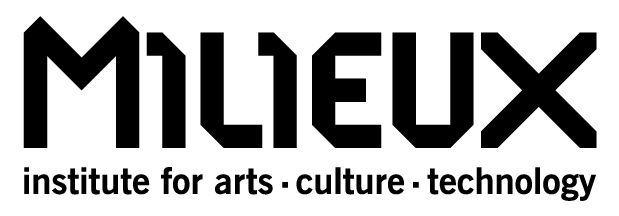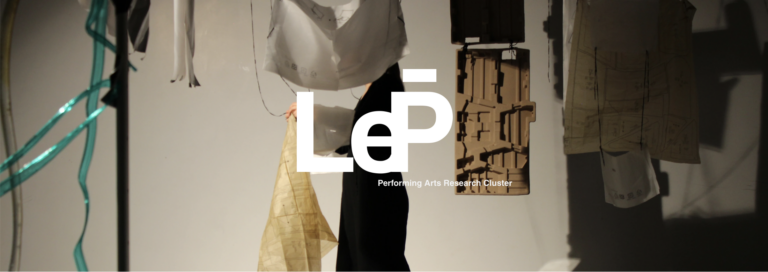This article was originally published in Visual Arts on Oct 25, 2016.
Flesh and Fiber
By Mike Landry
In fall of 2014, WhiteFeather Hunter spit about a teaspoon of saliva into a tube, and sent this off in a plastic specimen bag to the 23andMe lab in Burlington, North Carolina. In doing so, the New Brunswick-born artist joined more than a million others who’ve, since 23andMe’s founding in 2006, had their DNA makeup decoded by the genetics company, sold on the promise, “the more you know about your DNA, the more you know about yourself.”
Hunter’s results were ready within a month. It contained information from about 500,000 sites of variation within her genome. Hunter took the data to Iceland for a month-long residency this summer with the The Icelandic Textile Centre. Her project was to use her DNA data to isolate her Nordic heritage and harvest flora and fauna to represent this.
The work offers an entry point to Hunter’s current practice. Her early pieces used textile as sculpture along with flesh and bodily materials, which culminated in 2009 with Alma, an adult-sized creature of human hair and products from eight other animals that became an Internet sensation after she anonymously installed it on a hilltop in Fredericton.
Now she spends her time at the Milieux Institute of Arts, Culture and Technology at Concordia University. She’s helped set up the lab there, an aseptic space of white and steel. Where once her hands were crucial to her artmaking, to touch anything created in this space would be to destroy it.
This is where Hunter practices what has been dubbed, broadly, as ‘bioart.’ She’s creating living textiles: using her own hair, silk or gut sutures and mini 3D-printed looms and crochet hooks to weave scaffolding upon which connective tissue can foster. In Incubatrix Neith (2015), a live microscopic video feed allowed audiences to watch the growth. She’s certified, among a slew of things, to handle blood and dispose of hazardous waste, and licensed to transport dangerous goods.
“It was working with flesh and body materials that called out to me,” says Hunter. “You have to really work to find space for creative play, because, sometimes, if you take too many liberties then your experiment dies.”
While the field may seem cutting edge, Dr. Jennifer Willet, a visual arts professor at University of Windsor, considers it part of a long trajectory of art. Willet established Canada’s first biological art lab, INCUBATOR, in 2009. She sees bioart as extending from gardening and food a to high-end technology. It’s about “trying to create this joyous, interspecies experience,” which she says often results in delight, surprise and wonder for artist and viewer. “The idea of bioart is more intimidating than the reality.”
Willet says Canada—where the natural world has vines itself around our collective unconscious—is primed for bioart, and has a high density per capita. She considers artists like Winnipeg sculptor Aganetha Dyck, and her collaboration with bees, bioartists. Willet had only nine students sign up for her first undergrad class with INCUBATOR. Now it’s in high demand, among science students, too.
There are two main questions that dog the practice, Willet says: the ethics of working with living things and the old “But is it art?” Responding to the former, she offers that there’s an ethical cost to any artistic practice, but this is explicitly part of bioart. And the latter is more a problem with presenting the work, rather than the work itself.
This problem of presentation is one Hunter struggles with and has discussed with Halifax-based curator Mireille Bourgeois. She’s wrapping up a two-year investigation into bioart, with the hope this will drive a large-scale bioart exhibition in Atlantic Canada in 2018.
Bourgeois came to bioart from media arts. Whereas media artists play with determined systems, she says bioart involves oft unpredictable systems. In this way, the field draws from strongest wells of art—chance, experimentation and happenstance—while still offering a comment on social construction. That lab work is so foreign, yet due to modern medicine ever-present, is fertile ground for commentary. And this carries over to the gallery, too. If bioart is “challenging what human is and can be,” her work must be more than the aestheticization of the lab.
“I really like the idea of breaking down frames,” says Bourgeois. “To enter an exhibition, you always must walk through a door. The less doors you have to enter the better.”
Art, after all, is about how we perceive the world, what this choice means and how this differs from how things are or could be. To view life at the microscopic, down to our very DNA, reframes everything. Narrative non-fiction writer Annie Dillard regularly used a microscope as an ascetic practice. “I don’t really look forward to these microscopic forays,” she writes in her classic Pilgrim at Tinker Creek. “I do it as a moral exercise … a constant reminder of the facts of creation that I would just as soon forget.”
Hunter’s experiments with living textile, cyborg tissue, provides a similar reminder. As she cultures cells, she shows how our concept of the human form is cultured, too, creating an empathetic relationship.
“They are still entities that are present in the work, and that entity-hood can’t be erased,” says Hunter. “When we start centralizing our own perspective and start assuming other perspectives can’t even understand, then things really get interesting.”



